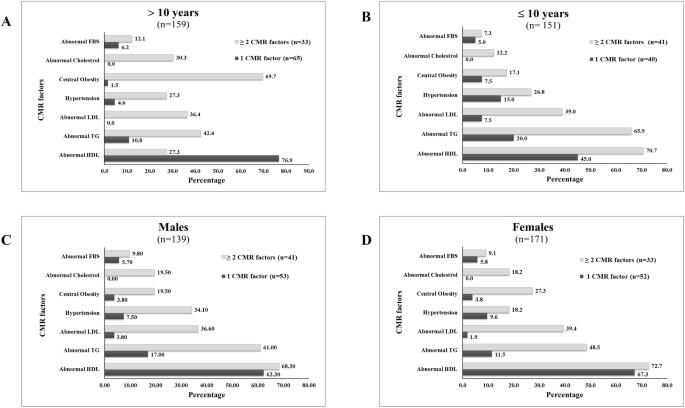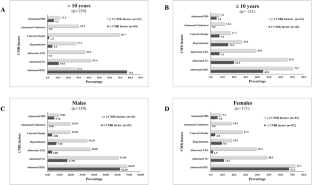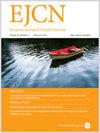Do cardiometabolic risk factors mediate the relationship between body composition and bone mineral content in South Indian children aged 5 to 16 years?
IF 3.6
3区 医学
Q2 NUTRITION & DIETETICS
引用次数: 0
Abstract
The complex interplay between adiposity, bone health and cardiometabolic risk (CMR) factors is unclear in Indian children. We aimed to investigate the mediating role of number of CMR factors on the relationship between fat % and bone mineral content (BMC) % in South Indian children aged 5–16 years. Healthy children (n = 317), from India, underwent anthropometric, blood biochemistry, blood pressure, along with body composition and BMC assessments using Dual-energy X-ray absorptiometry. Based on the number of CMR factors, children were categorised into three groups: 0, 1 and ≥ 2. Analysis of variance was used to compare the parameters between the CMR groups and mediation analysis was performed to examine if the number of CMR factors mediated the relationship between fat % and BMC %. The prevalence of 0, 1 and ≥ 2 CMR factors was 42.3%, 33.9% and 23.9% respectively; mean BMC % was lowest in ≥ 2 CMR group. In the whole group, BMC % had significant negative correlation with fat % (r = −0.68, p < 0.0001) and positive correlation with lean % (r = 0.64, p < 0.0001). Adjusted for age and sex, results suggested significant mediating effect of number of CMR factors on the relationship between fat % and BMC % (Average Causal Mediation Effects =−0.002, bootstrapped 95% CI: −0.0039, −0.0001, p < 0.01), but losing significance when adjusted for co-variates. Number of CMR factors mediates the relationship between fat % and BMC % in Indian children. Further studies are needed to confirm these findings, understand mechanisms and plan appropriate strategies.


心血管代谢风险因素是否对南印度 5-16 岁儿童的身体成分和骨矿物质含量之间的关系起中介作用?
背景/目的:在印度儿童中,脂肪、骨骼健康和心脏代谢风险(CMR)因素之间复杂的相互作用尚不清楚。研究对象和方法:来自印度的健康儿童(n = 317)接受了人体测量、血液生化、血压以及使用双能 X 射线吸收测量法进行的身体成分和骨矿物质含量(BMC)评估。根据 CMR 因子的数量,儿童被分为三组:0、1 和 ≥ 2。采用方差分析比较 CMR 组间的参数,并进行中介分析,研究 CMR 因子数是否中介脂肪率和 BMC 率之间的关系:0、1和≥2个CMR因子的发生率分别为42.3%、33.9%和23.9%;≥2个CMR因子组的平均BMC%最低。在全组中,BMC%与脂肪%呈显著负相关(r = -0.68,p 结论:BMC%与脂肪%呈显著负相关:在印度儿童中,CMR因子的数量介导了脂肪率和BMC率之间的关系。需要进一步研究来证实这些发现,了解其机制并制定适当的策略。
本文章由计算机程序翻译,如有差异,请以英文原文为准。
求助全文
约1分钟内获得全文
求助全文
来源期刊
CiteScore
10.60
自引率
2.10%
发文量
189
审稿时长
3-6 weeks
期刊介绍:
The European Journal of Clinical Nutrition (EJCN) is an international, peer-reviewed journal covering all aspects of human and clinical nutrition. The journal welcomes original research, reviews, case reports and brief communications based on clinical, metabolic and epidemiological studies that describe methodologies, mechanisms, associations and benefits of nutritional interventions for clinical disease and health promotion.
Topics of interest include but are not limited to:
Nutrition and Health (including climate and ecological aspects)
Metabolism & Metabolomics
Genomics and personalized strategies in nutrition
Nutrition during the early life cycle
Health issues and nutrition in the elderly
Phenotyping in clinical nutrition
Nutrition in acute and chronic diseases
The double burden of ''malnutrition'': Under-nutrition and Obesity
Prevention of Non Communicable Diseases (NCD)

 求助内容:
求助内容: 应助结果提醒方式:
应助结果提醒方式:


